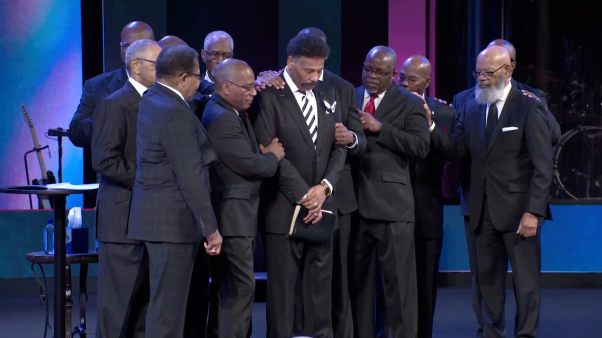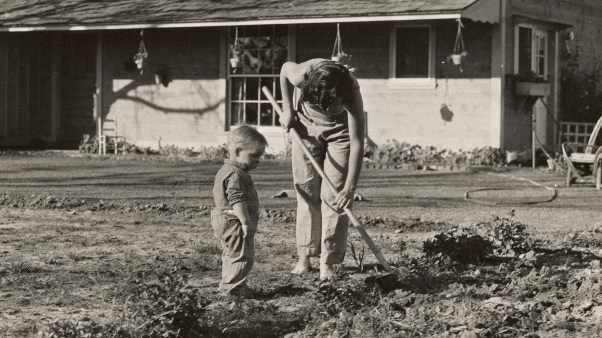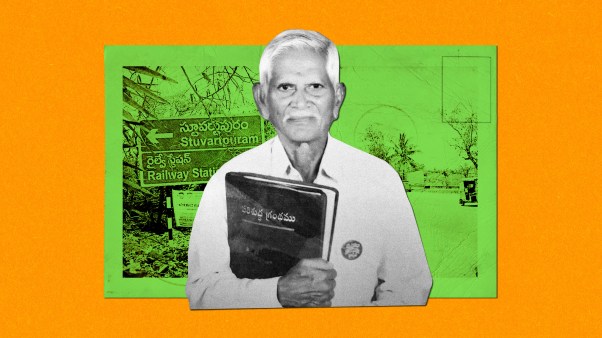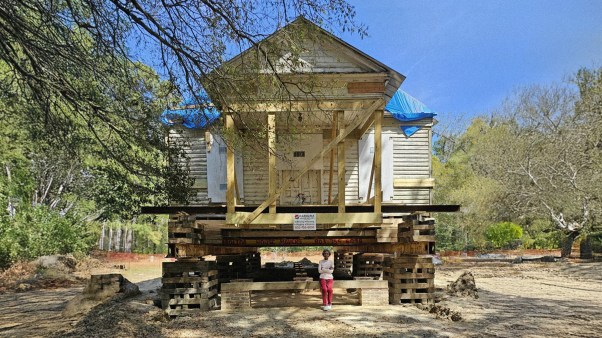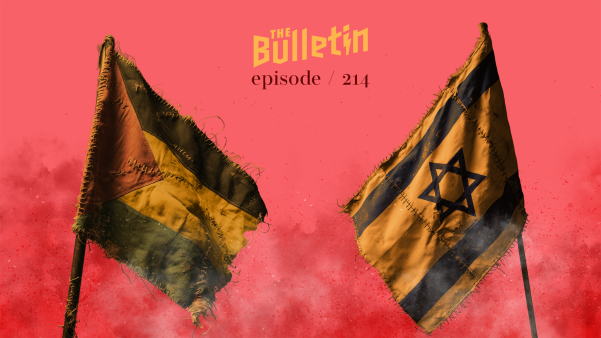Fifty years ago this month the biggest news story since World War I broke across the front pages in this country and abroad: the Scopes “monkey” trial of July 9–21, 1925. And only a few days after the trial ended, its most famous participant, William Jennings Bryan, lay dead.
Today historians are beginning to see the Scopes trial and William Jennings Bryan in a different way than most Americans saw them in 1925. By the end of the trial, Bryan was the most vilified man in America, at least in most of the nation’s leading newspapers. He died shortly afterward with a dark cloud hanging over his reputation.
But from the perspective of half a century, Bryan’s place of leadership in both the Progressive movement and evangelical Christianity is being reassessed. The experiences of fifty years have forced historians to take a second look at the harsh criticisms leveled at him in the mid-1920s. Bryan’s personal and political reputation is being restored, and evangelicals are rediscovering a respected “hero of the faith.”
The 1920s were a time of intellectual, social, and economic upheaval in the United States. They were also a time of bitter trial for American Christianity. As the noted historian Sydney E. Ahlstrom said: “Furious controversies, great debates, and wild fulminations were the order of the day. And nearly all of this conflict is part of the nation’s religious history, either because the churches were active participants or because events impinged on their life” (A Religious History of the American People, p. 896).
Perhaps most important for evangelical Christianity was the spectacular development of science and technology in the period. Some Protestant leaders tried to accommodate traditional doctrines to modern scientific thought, and theological liberalism became popular in some circles. Other Protestants, mostly evangelicals, refused to alter their beliefs to suit the theories of science, especially in the realms of biology and anthropology. Although the lines of battle had been drawn before 1920, warfare erupted between two major Protestant groups after that date.
Evolution became the focal point for this fundamentalist-modernist confrontation. On one side stood those who rejected any possibility of the evolutionary development of man. On the other stood those who accepted the basic ideas of Charles Darwin concerning the “descent of man.” The public schools and state legislatures of the nation were the battleground.
Evolution became the focal point of the fundamentalist counterattack on modernism because it provided a concrete target. The variety and fluidity of theological liberalism made it an elusive enemy. However, Darwinian evolution was an unmistakable and highly visible part of the modernists’ ideological superstructure, and therefore an obvious area for fundamentalists’ attention. Moreover, its growing identification with atheism, sexual immorality, secularism, and Communism in this period made it eminently attackable.
In this way the Scopes trial became central to the fortunes of fundamentalism in the twenties. This case gave the fundamentalists worldwide notoriety and brought the issue of evolution to Main Street America. In addition, the trial in Dayton, Tennessee, dramatized the nature of the conflict between the two religious movements fighting for the soul of America. Finally, it brought Bryan to the forefront in his last great role in American history: defender of the fundamentalist faith.
The Shining Knight
Bryan had long been known as an outspoken champion of the Christian faith. A testifying Presbyterian, he was unabashed in his stand for evangelical Christianity and the application of Christian principles to politics. Bryan, the Great Commoner and three-time Democratic presidential nominee, was something of an American folk hero, especially in rural America. As a man of impeccable morality and Christian idealism, he was the “shining knight” of the Progressive Era of American history.
However, after 1920 the Commoner turned his main attention to what he perceived as the threat to Christian orthodoxy presented by evolution. His patience with evolutionary theory gradually wore thin. Finally, Bryan consented when prominent fundamentalists urged him to assume the leadership of a great anti-evolution crusade. Although more accurately described as an “evangelical” and not as a sociological fundamentalist, Bryan certainly embraced the “fundamentals of the faith” that marked theological fundamentalism, and after 1920 he became the most distinguished spokesman for the fundamentalist cause.
The general outline of the story of the famous Dayton trial in 1925 is well known. The bizarre affair centered on the trial of a young local high school teacher, John T. Scopes, who was accused of violating a new Tennessee law that forbade the teaching of the theory of evolution in the public schools. Scopes freely admitted that he had taught the questionable doctrine, but, through his lawyers, he challenged the constitutionality of the law. Bryan was invited to join the prosecution.
Legal niceties aside, the real opponents in the trial were the older Protestant America and the newer, increasingly secular America. The Dayton trial provided a forum for a great debate between leading spokesmen for the two sides: William Jennings Bryan and Clarence Darrow.
But the Scopes trial turned out to be a nightmare for Bryan and the fundamentalists. It also proved to be a watershed in American religious history. This trial did more than any other single event of the decade to discredit evangelical Christianity in the United States. Bryan and the fundamentalists movement came away battered and scarred, in the areas of both public perception of the Christian stand on evolution and of evangelical morale. After July, 1925, the term “fundamentalist” became synonymous with bigotry and ignorance in the minds of millions of Americans. How and why did this happen?
The Tarnished Armor
By 1925, fundamentalism represented evangelical Christianity to the popular mind, and Bryan was its most prestigious leader. Unfortunately, the Bryan of 1925 was not the vigorous, dynamic Bryan of an earlier era. By 1925, he was sixty-five and in failing health, both physically and politically. The opposition at Dayton took advantage of Bryan’s growing weakness, and to some extent he laid himself open to the kind of treatment he received. His defense of the faith he loved so dearly was neither sophisticated nor particularly relevant. On the other hand, Darrow was ruthless in dealing with Bryan and left no avenue unexplored that might make the aging Commoner look like a religious crank. In effect, Darrow put Bryan on trial at Dayton and focused attention on him rather than Scopes.
But Bryan’s mistakes and the advantage Darrow took of them to discredit his opponent and his opponent’s faith do not explain fully the widespread negative impression of Christianity left in the minds of many Americans after the trial. Darrow was abetted in his efforts by a press hostile to Bryan and his cause. Many Americans assume that slanted journalism is a recent invention. As a matter of fact, it has a considerable history in this country. But even at that, the historian is struck by the vigorous antagonism toward Bryan displayed by American newspapers in July, 1925.
Research indicates that the majority of those who reported the Scopes trial went out of their way to cast Bryan in the role of an ignorant fanatic and bigot. It is not clear why the contemporary press was so hostile to Bryan and fundamentalism; more study needs to be done to clarify this. Whatever the case, Bryan was misquoted, jeered, and vilified in many of the nation’s leading newspapers and magazines.
A study of the New York Times’s coverage of the event reveals how far this animosity toward Bryan extended. The Scopes trial dominated page one of the Times from July 9 to July 22, 1925. On the opening day the champion of fundamentalism was strategically misquoted by a Time reporter to the effect that if he lost in Dayton he would lead a campaign to put the Bible in the Constitution and push for an amendment to prohibit the teaching of evolution. What Bryan really said was that if he lost the Scopes case he would carry the fight to the people. A correction, published at Bryan’s insistence, appeared days later on page two. In the interim, Bryan became the object of a spate of editorials and cartoons in national newspapers denouncing him for his alleged efforts to impose his kind of religion on others by law.
During the trial the Times ran several editorials severely criticizing Bryan and referring to him as “prodigiously ignorant” and a man with “a poorly furnished brain-room.” An unflattering large picture of Bryan appeared on the front page on July 13. When Bryan supposedly stated at the trial that “these men [the evolutionists] would destroy the Bible on evidence that would not convict a habitual criminal of a misdemeanor,” the Times requested that Professor H. F. Osborn, president of the New York Museum of Natural History, reply. It gave him a “special features” section in the July 12 issue of the paper to do so. Even when Bryan died shortly after the trial, the Times editors could find little good to say about him except for a few backhanded compliments.
Other major nationally recognized papers joined in the attack. On July 10, the Atlanta Constitution carried a lead story by Raymond Clapper, who claimed that the antagonists in Tennessee were ready for “the greatest battle of the mind since Galileo was imprisoned by the inquisition for teaching the earth is round.” It goes without saying who at Dayton represented Galileo and who the Inquisition. In a similar vein, several bitter editorials in the Cleveland Press attacked the Commoner and his fundamentalist followers; one suggested that the reporters at Dayton might be better off if they simply packed up and “took a train for the United States.”
Perhaps the harshest and most relentless assaults on Bryan came from the Chicago Tribune, which also had its radio affiliate WGN broadcasting directly from the site of the trial. Half a dozen editorials during the three-week period characterized Bryan as a bigot and an enemy of American liberty. On July 22, the Tribune’s lead editorial commented on the results of the trial: “In each state of the Union he wants a law which will bring the aid of the legislature, the law, the courts and the police to the upholding of his way of reading the King James version of the Bible.” A series of Tribune cartoons during the course of the trial mercilessly lampooned Bryan as an ignorant hayseed.
The best example of non-objective reporting was that done by H. L. Mencken, who covered the trial for the Baltimore Evening Sun. Mencken, sharp-tongued critic of Americana and iconoclast par excellence, and a number of other reporters acted unofficially on behalf of the defense. Mencken’s attitude to Bryan is summed up by his reaction to the news of Bryan’s death a few days after the trial: “We killed the son-of-a-bitch!”
The negative impression of Bryan purveyed by the American press in July, 1925, was enhanced decades later by a broadway play (1950) made into a movie (1960) entitled Inherit the Wind. The movie more than the play assailed Bryan and fundamentalism and badly hurt their image. Although real names were not used, Inherit the Wind is about the Scopes trial. The movie is a classic case of historical distortion and the manipulation of ideas and characters. Bryan is portrayed as an ignorant fanatic, the fundamentalists are caricatured as vicious and narrow-minded hypocrites, and Darrow is the idealized showcase liberal. And this is the stuff of which stereotypes are made!
After 1925 the notion that Bryan and Fundamentalism stood for bigotry and ignorance grew until it became the accepted view. Bryan, the shining knight of Progressivism, now wore badly tarnished armor. Over the years novels, essays, and poems, and Inherit the Wind helped sustain the myth. Fundamentalists themselves contributed to it after 1925 by emphasizing the “withdrawn life” and by becoming more negative in their world view.
The Vanquished Vindicated
But this reactionary stereotype is grossly unfair to Bryan and to evangelical Christianity. Bryan’s post-1920 faults and later fundamentalist negativism must be admitted; yet the whole of a man’s career must be assessed before judgment is passed. More recent students of Bryan’s life and work (such as historians Paul W. Glad and Paolo Coletta) are inclined to see the Great Commoner’s positive achievements as far outweighing the negative image stemming from the Scopes trial. With the passage of years, scholars see more clearly the Bryan who was a great Christian statesman and a leading Progressive reformer. Moreover, the course of recent history has forced many scholars to re-evaluate their judgment of the Dayton trial itself, especially in the light of the principle of Bryan’s position there.
As Professor Coletta has pointed out concerning Bryan: “His uniqueness lay in his double dedication, first to his God, second to the ideal of imbuing America’s domestic and foreign relations with Christian ethics and morality. In each case he was a humanitarian.” As a Christian statesman, he consistently defended personal rather than property rights and championed democracy as the best of all possible forms of government. As a Christian statesman, he opposed war and worked tirelessly for peaceful solutions to world problems. As secretary of state (1913–1915), Bryan negotiated arbitration treaties with thirty nations. He resigned this position in June, 1915 when he could no longer support President Woodrow Wilson’s increasingly belligerent policy toward Germany.
Further, Bryan was a progressive reformer and a humanitarian because he was an evangelical Christian. To the end of his life, his sense of Christian ethics remained supreme. He believed that the message of Christ was both individual and corporate. He stood for the cross of Christ and against imperialism, alcohol, greed, and godlessness. He believed in both political and economic democracy. He was in the vanguard of the drive for women’s suffrage because he believed it was where a Christian belonged. He worked vigorously for change and progress in the political and economic realms, but at the same time he wanted America to remain unchanged morally and theologically.
Moreover, the basic concern of Bryan and the fundamentalists at Dayton has proved to be a reality. Some have seen the Scopes trial turning on the issue of academic freedom versus the rights of taxpayers. Others feel it was a showdown between the new urbanism and the old agrarianism, while still others regard the focal point as the modernist-fundamentalist controversy.
Bryan thought differently. In his last printed speech, published posthumously, he declared that although it is desirable to know science, it is imperative to know how to live. He went on to say that evolution was deadening the spiritual lives of millions of students by making the redemption of the individual impossible and by substituting the law of the jungle for the love true Christians have for all people. Bryan was rightly concerned about a cult of science that stripped away basic beliefs, provided no adequate system of ethics, offered little sustenance in times of grief, and robbed society of an integrative principle with which to explain humanity and the universe. Fifty years later, more and more people are aligning themselves with Bryan in this concern.
Insights For Evangelicals
The anti-evolution crusade that fizzled in Tennessee in 1925 represented the last gasp of Bryan-style Progressivism. Bryan was the last of the major evangelical leaders of the early twentieth century to blend populist democracy with the historic Christian faith until the recent resurgence of evangelical social concern in the 1960s. Even though Bryan won the battle at Dayton, he and the fundamentalists lost the campaign for the hearts and minds of the American people during the next generation. As a result of the largely negative reactions to evangelical efforts to meet the threat of evolution through political and social action, the fundamentalist wing of evangelical Christianity increasingly withdrew from the mainstream of American life and turned its attention more and more narrowly to a Gospel shorn of its social dimension.
The confrontation at Dayton offers a number of insights for evangelicals, especially from the perspective of fifty years. First, evangelical Christians need to pay more attention to the press. Something happened in the years prior to 1925 to create a body of reporters and correspondents basically hostile to the evangelical community and its leadership. Probably a number of factors entered into this antagonism between Bryan and his followers and the press corps at Dayton. But whatever the reasons, the situation makes it clear that in a mass society evangelicals cannot afford to ignore the role of mass communications. In 1925, it was newspapers and radio, then just a fledgling industry. Today it is both of those plus TV. More evangelicals need to consider media journalism as a calling of God. More evangelicals need to concentrate on good relations with the press in order to aid the work of God at many levels.
BY YOUR FLIGHT, O DOVE
By your flight, O dove,
we know you;
by your access,
regal, sure—
by your rapt delineation
of your message,
by your power.
You have circled over
the Savior,
spread your wings
above his Word.
Irresistible your
signals,
we have kneeled
before your Lord.
BETH MERIZON
Second, evangelicals need to remember their heritage of political and social activism so abundantly illustrated by the career of William Jennings Bryan. For more than forty years, Bryan enriched American life with his dedication to democratic and humanitarian reform. At all times he tested all questions, whether of law, politics, or economics, by the light of the Bible and/or democratic principle. His political involvement was based, as he himself said, on “faith in God, belief in Christ, and confidence in the people.” A man with admitted human faults, he was a warm, honest, wholesome human being who spent his entire life translating Christian ethical principles into political action. A growing number of evangelicals feel that he is the prototype of national leader desperately needed today. The Bryan heritage of evangelical social and political concern needs to be redeemed.
Finally, evangelicals can learn from the Scopes trial the advantages of the positive approach and the pitfalls of excessive negativism. Bryan and his followers allowed themselves to be trapped at Dayton. They were maneuvered into the role of villain and bigot, a very uncomfortable one for an old reformer like Bryan. Nevertheless, it happened, and evangelicals emerged from the incident tarred with the brush of reaction, anti-intellectualism, and authoritarianism. After 1925, the fundamentalist movement soured and became more and more defensive. The initiative in the struggle for the soul of the nation passed to the modernists, who held it for a generation. Now, in the new era of evangelical resurgence, the evangelical community has an opportunity to see that such a debacle does not occur again.
Bryan believed that God stands in judgment of all political, economic, and social systems—and so should all Christians today. Bryan believed that every follower of Christ has stake in his government and his society—and so should all Christians today. Bryan believed that the Gospel of Christ entailed not only individual but also social righteousness—and so should all Christians today. In this respect, the Great Commoner’s eloquent words, carved on his statue in Lincoln, Nebraska, are a fitting tribute to the man and the heritage he has left for evangelicals today: “The humblest citizen in all the land, when clad in the armor of a righteous cause, is stronger than all the hosts of error.” This, and not the negative image created by the Scopes trial, is the heritage of William Jennings Bryan. Will evangelicals in this generation reclaim it before it is too late?



